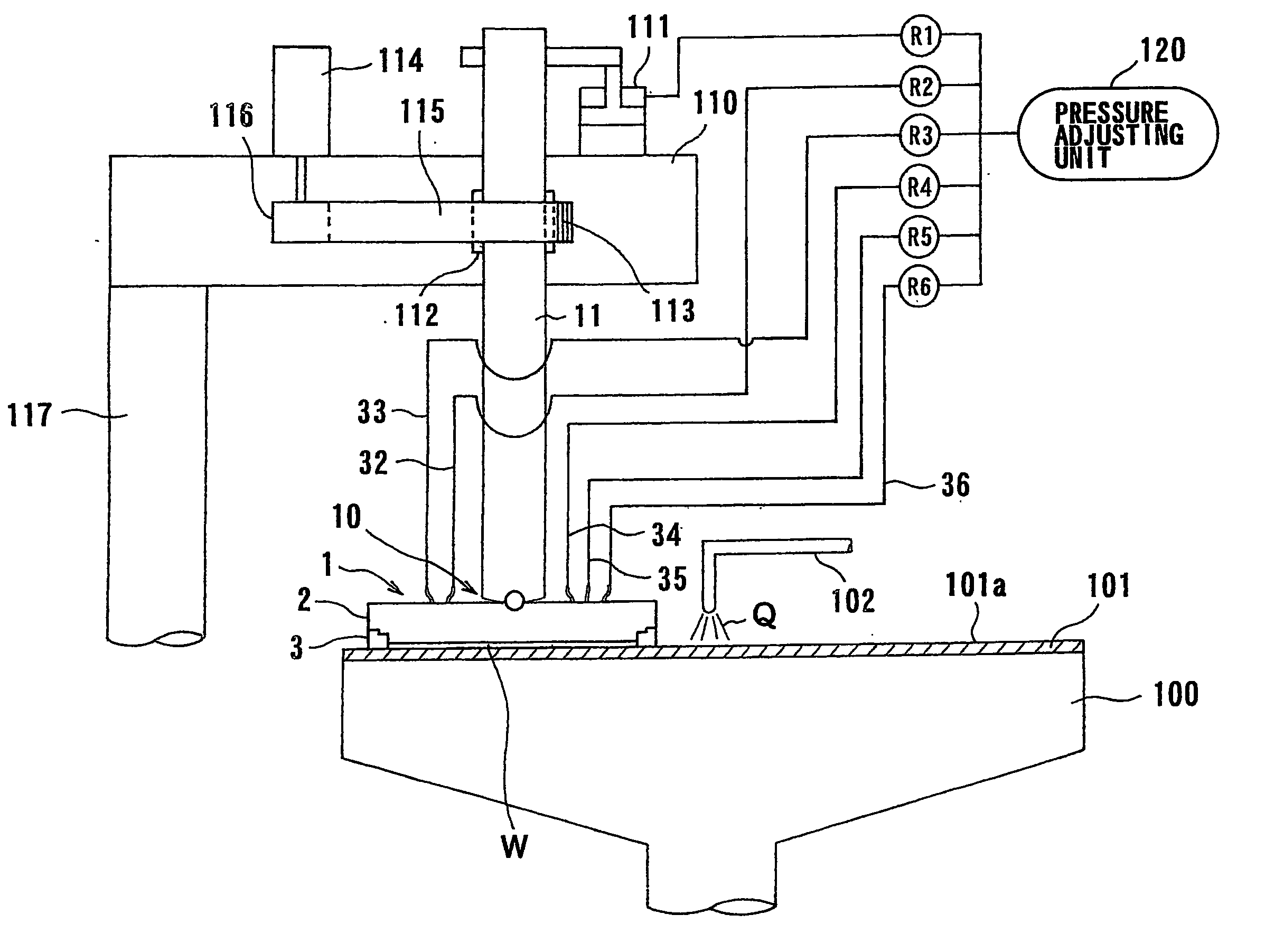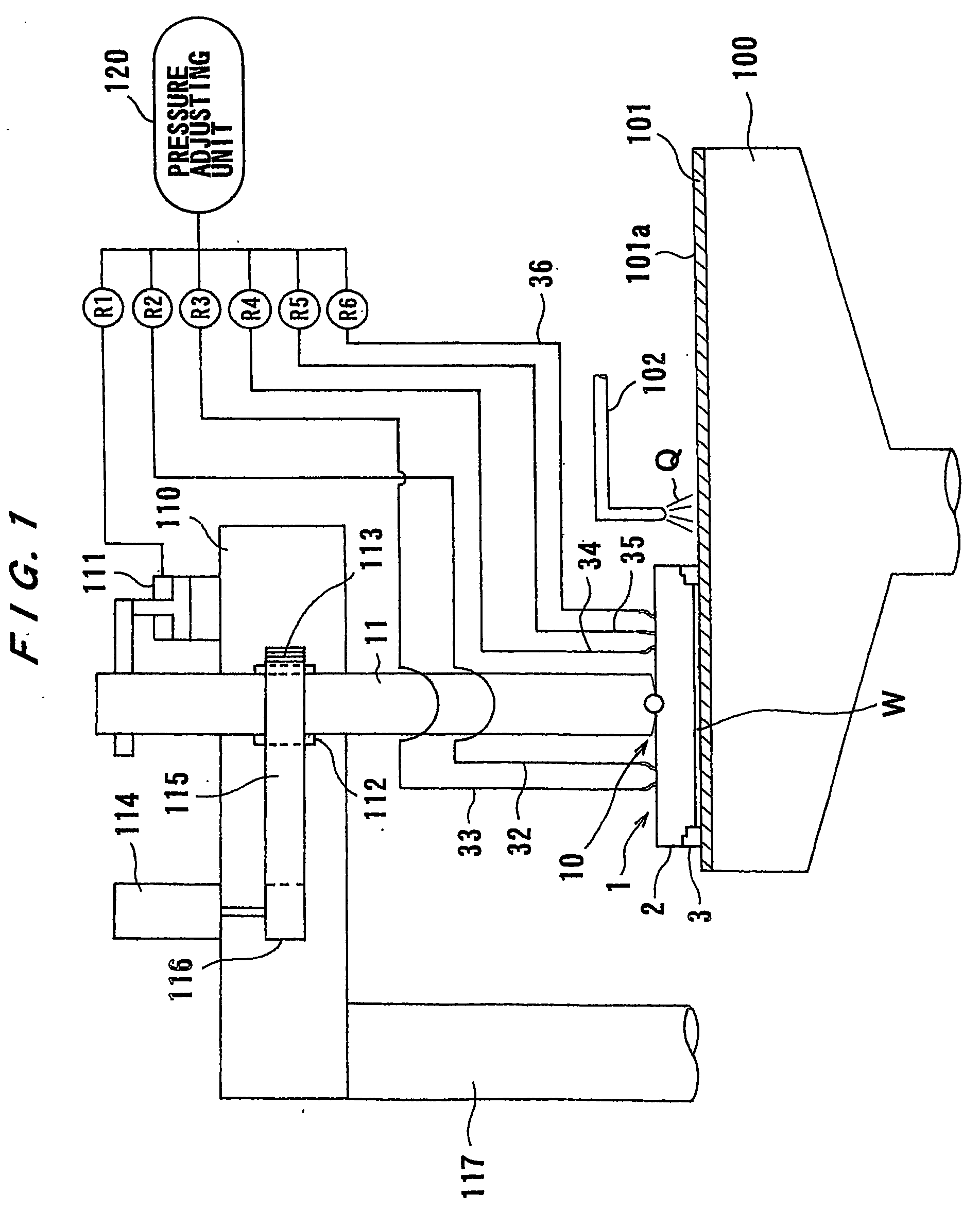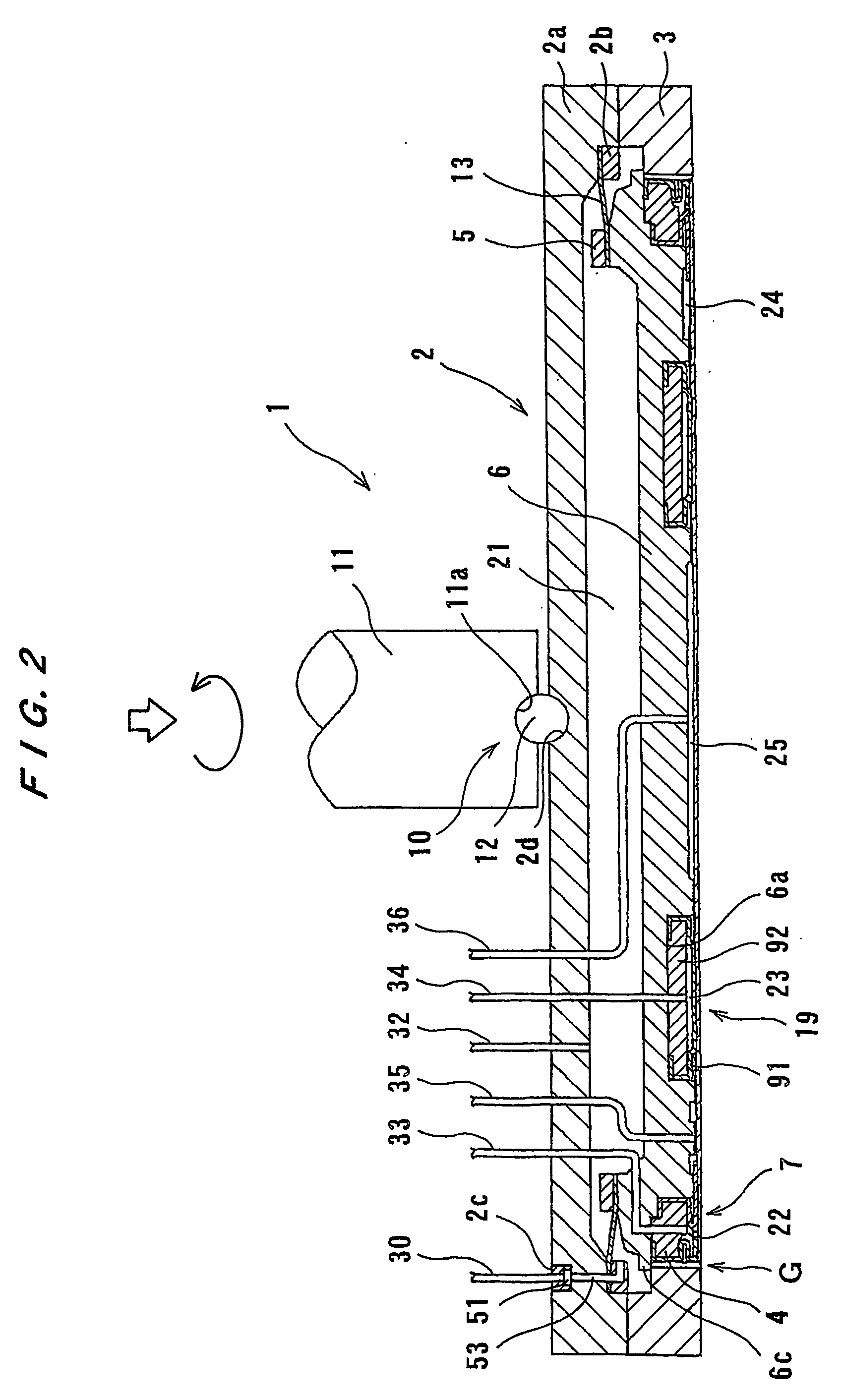Substrate holding apparatus and polishing apparatus
- Summary
- Abstract
- Description
- Claims
- Application Information
AI Technical Summary
Benefits of technology
Problems solved by technology
Method used
Image
Examples
first embodiment
[0111] A substrate holding apparatus and a polishing apparatus according to the present invention will be described in detail below with reference to the drawings.
[0112]FIG. 1 is a cross-sectional view showing an entire structure of a polishing apparatus having a substrate holding apparatus according to a first embodiment of the present invention. The substrate holding apparatus serves to hold a substrate such as a semiconductor wafer to be polished and to press the substrate against a polishing surface on a polishing table. As shown in FIG. 1, a polishing table 100 having a polishing pad 101 attached on an upper surface thereof is provided underneath a top ring 1 constituting a substrate holding apparatus according to the present invention. A polishing liquid supply nozzle 102 is provided above the polishing table 100, and a polishing liquid Q is supplied onto a polishing surface 101a of the polishing pad 101 placed on the polishing table 100 from the polishing liquid supply nozzle...
second embodiment
[0159] As shown in FIG. 6A, the outer contact portion 8a constituting the contact portion 8, to be pressed by the pressing member 45, has a thick portion 48 on the upper surface thereof. The thick portion 48 extends in the circumferential direction of the outer contact portion 8a, and has a substantially arcuate cross section. A reinforcement member 50 for reinforcing a strength of the outer contact portion 8a is embedded in the outer contact portion 8a. The pressing member 45 has a step on the lower surface thereof to form a first pressing surface 45a and a second pressing surface 45b positioned upwardly of the first pressing surface 45a. The first pressing surface 45a is brought into contact with the outer contact portion 8a, and the second pressing surface 45b is brought into contact with the thick portion 48. The first pressing surface 45a and the second pressing surface 45b have a plurality of radially extending grooves 46a, 46b formed therein, respectively. The grooves 46a, 46...
third embodiment
[0164] With this structure, while the outer contact portion 8a is being pressed by the pressing member 45, the pressurized fluid is supplied to the upper surface of the outer contact portion 8a. Therefore, as with the third embodiment described above, while the edge membrane 7 is being pressed by the pressing member 45, the pressurized fluid can start pressing the outer contact portion 8a (contact portion 8).
[0165] An edge membrane according to a fifth embodiment of the present invention will be described below with reference to FIGS. 8A and 8B. FIG. 8A is a cross-sectional view showing the edge membrane according to the fifth embodiment of the present invention, and FIG. 8B is a cross-sectional view showing another structure of an edge membrane in the fifth embodiment of the present invention.
[0166] With the edge membrane according to the first embodiment, the stretchable and contractible portion is provided by folding a portion of the circumferential wall along the circumferentia...
PUM
| Property | Measurement | Unit |
|---|---|---|
| Thickness | aaaaa | aaaaa |
| Adhesivity | aaaaa | aaaaa |
| Elasticity | aaaaa | aaaaa |
Abstract
Description
Claims
Application Information
 Login to View More
Login to View More - R&D
- Intellectual Property
- Life Sciences
- Materials
- Tech Scout
- Unparalleled Data Quality
- Higher Quality Content
- 60% Fewer Hallucinations
Browse by: Latest US Patents, China's latest patents, Technical Efficacy Thesaurus, Application Domain, Technology Topic, Popular Technical Reports.
© 2025 PatSnap. All rights reserved.Legal|Privacy policy|Modern Slavery Act Transparency Statement|Sitemap|About US| Contact US: help@patsnap.com



